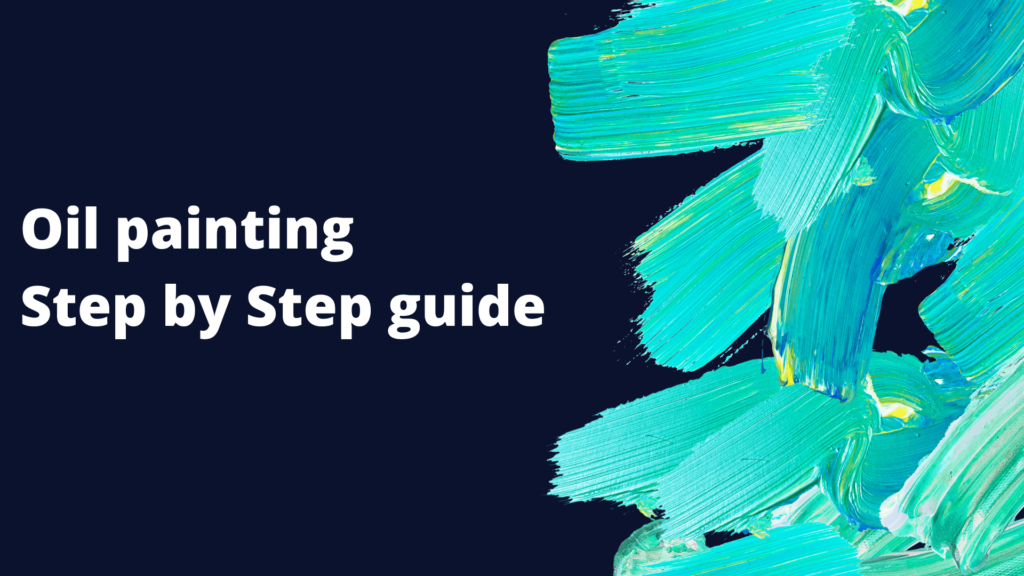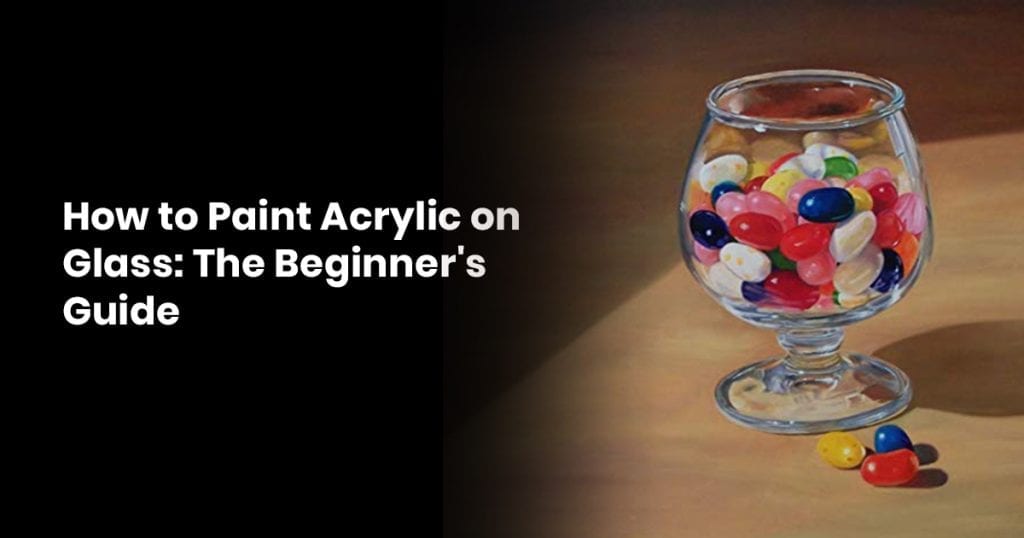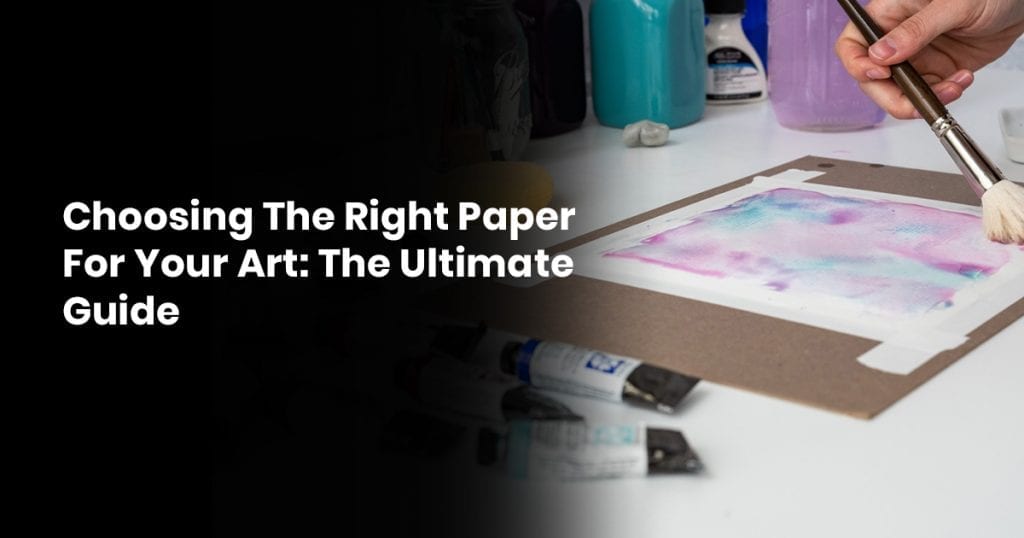Contents
Oil Painting: Everything You Need To Know
Oil painting has been a popular artistic medium for quite some time and for good reason. Oil paints are not only economical but are versatile and archival as well.
However, oil painting isn’t as easy to pick up as most people tend to think. There are a few “rules” you’ll need to understand before you can call yourself a master. Furthermore, it’ll take you some time to familiarize yourself with the primary techniques involved.
If you’re looking to learn as much as you can about oil painting, you’re in the right place. This article will cover most of the main parts of oil paintings and will give you an idea of what to expect.
What is Oil Paint?
Oil-based paints are made up of ground-up pigment components suspended in drying oil, which is often linseed oil. The quality of the pigment used will typically determine the quality of oil-based paints themselves, the medium to be used and how fine the paint’s pigment is.
Mixing more oil into the paint will help make it more fluid. You can add solvent as well but this will weaken the paint. Oil paints are generally the most stable as soon as they’re out of the tube.
Acrylic vs Oil Paint
The main difference between acrylic and oil paints is the former is water-based while the latter is developed using drying oil with a medium of either linseed, synthetic polymer or animal fat.
You can thin and brush acrylic paints just like you would watercolours. Acrylic paints dry up to a harder finish and are usually better for beginners. Oils dry a bit slower on the surface, which gives you more time to make changes and blend colours.
Another reason why acrylic paints are better for beginners is that you can paint on literally anything. Oil-based paints are a bit harder to use for beginners because they need more preparation. You need to take some time to prepare the canvas before you paint using oil paints.
Lastly, acrylic paints change colour when dry. The binder contained in acrylic paints is normally white but dries up clear, meaning it’ll appear a bit lighter on the canvas. However, oil paints don’t have an immediate colour shift. The colour of oil paints stays the same once they’re on the canvas.
How to Use Oil Paints as a Beginner
There is a certain old-school feel that comes with oil painting, and this is mainly because of how popular it was among many European Renaissance masters. However, that doesn’t mean you can’t use them for contemporary, fresh art. They don’t have to intimidate you.
As a beginner, start small. Starting new projects can be very exciting, but try and avoid going big on your first run out. It’ll be much easier to learn when you aren’t being overwhelmed by how big the size of the project.
With that said, if you want to add technique and depth to your oil painting techniques, follow the tips and steps below.
- Gather your Materials
Before getting started with the oil painting itself you will need to gather the following supplies.
- Paintbrushes made from synthetic fibres or hog hair
- Oil-based paints
- Canvas
- Solvent and/or linseed oil to help thin the paints
- A palette and palette knife for mixing the paints
- Old rags and/or paper towels
- An easel
Start with the basic colours in the beginning. This allows one to experiment more with their colour mixing techniques, in turn, allowing them to have a better feel for the qualities of oil-based paints.
Start by using the primary colours alongside black and white. Add to this selection once you have mastered the basics of oil painting. Starter sets usually have a wide array of beginner oil painting setups.
Quality paintbrushes will usually specify whether they are suitable for oil painting. Just like with paints, you can pick individual brushes or get a whole starter set. Gather a mix of fan, square and round shapes in different sizes. As a beginner, try and start with the smaller collections and then add on to it as you master the craft.
The ideal surfaces for oil paintings are is a canvas board or stretched canvas. Whichever you decide to use, you’ll need to prep it with gesso.
- Setting up the Work Space
Who said you can’t do oil painting at home? Of course, you can. However, you need to be very careful. Oil-based paints themselves often have incredibly strong smells, and the solvents required for thinning and cleaning the brushes are toxic.
Use a space that has a lot of ventilation or consider painting outdoors. The use of nitrile or latex gloves is also something you’ll want to strongly consider when handling the paints. Why? Because some have dangerous chemicals that your skin can absorb.
- Priming the Canvas
Most oil painting should be done on canvas and when learning how to paint on this surface, there is a critical step you should not miss. Oil-based paints are thick, and the oil will seep into the canvas and any other surface you decide to use if you do not apply gesso before you start painting.
This affects the overall look of your masterpiece and can lead to canvas degradation over time as well. Gesso helps the oil paint stick to the surface easier. Some boards and canvases are already pre-primed with gesso. However, if not, you will have to do it yourself.
Gesso is a combination of gypsum, chalk and pigment. It comes in rabbit-skin glue or acrylic varieties. Gesso will take around 60 minutes to dry and you usually need two coats.
- Outlining the Painting
After preparing the canvas, it’s now time to start the actual oil painting process. It is common for people who use oil-based paints to start by covering their canvas in a very thin wash of the primary colour that’ll act as the base of the painting.
After they’ve done this, they’ll roughly sketch the dominant lines, shapes and focal points onto their canvas in light black paint or in pencil.
After you’re through with this, you are now ready to start mixing up some colours. Use the same colour mixing principles you’d use for other kinds of pigments. You can change the effect of your paint by adding linseed oil or solvent to thin it out.
- Layering the Paints
After preparing the paint, you will need to build up your colours and paint. One of oil painting’s most basic rules is the “fat over lean“ rule. This prevents oil-based paints from cracking and breaking once dried up. The oilier your paints, the “fatter” they are, and the longer they’ll take to dry.
So, always consider applying thinner (leaner) paints first, underneath the oilier (fatter) layers to help prevent cracking and slow drying. How long does it take for oil-based paints to dry? Well, it all depends on how thick those particular paints are. However, it can take about 60 days or longer.
How to Clean Your Paint Brushes
Learning how to do the painting itself on canvas is but one part of the whole oil painting process. Cleaning up after yourself is something you’ll need to know how to do as well.
Because the main ingredient in oil-based paints is, well, oil, you won’t be able to use water to wash the paints of your paintbrushes. You shouldn’t allow oil paints to dry on your brushes because this will spoil them.
Here’s what you need to do;
-
Use a Rag and Solvent to Wipe Off Excess Paint
Wiping off excess paint using a rag will make the washing process a whole lot easier. Once you’ve wiped off all the excess paint, add turpentine or the solvent of your choice to a clean rag to get rid of any paint that’s left.
Before you throw your towels or rags out, soak them in water to remove all the chemicals. This is important because these chemicals can cause the rag or towel to combust if not removed.
- Wash with Detergent and Warm Water
The next step, run the paintbrushes under warm water and rub them with some dishwashing detergent. Ensure all the paints have come off before you stop.
- Open Air Drying
Place the paintbrushes in a jar, bristle ends up, in a space with good ventilation and air circulation, like a windowsill. Avoid using dark cupboards for drying.
How to Get Rid of Oil Paints From Clothing
It’s hard to clean off oil paint on anything, even clothes. Look at how much effort you have to put into just cleaning the paintbrushes. That being said, the good thing is it’s not impossible.
Here are the steps you need to follow when getting rid of oil paints from clothes.
Step 1:
Turn the affected piece of clothing inside out and place it on a thin pile of clean paper towels or rags. Next, blot the paint stains from the backside with paint thinner or turpentine until no more paint can come off.
(Tip: Blot a tiny, hidden part of the clothing first to test whether the paint thinner will ruin or discolour your clothes.)
Step 2:
Rinse the clothes out. If your washing machine has an in-built water faucet, then the washer itself can do all this.
Step 3:
Apply detergent to the paint stains and soak the clothes in soapy, hot water overnight. Look at the clothing’s care tag and check the washing symbols to know what water temperature you need to use.
Step 4:
The next day, thoroughly rinse your clothes and wash them as you normally would.
Step 5:
If the paint stains don’t come off after washing, treat them with stain remover and then put them through the wash again. Do not try to dry the clothes until you’ve managed to completely get rid of the stain.
Step 6:
If the paint stain proves permanent, consider turning the garment into and tie and die piece of artwork.
Frequently Asked Questions
Can beginners oil paint?
If you want to make the oil a bit more fluid, you might have to add some more oil. It’s best to use the paint directly from the tube. Why? Because it’s more stable then. However, experimenting with texture will require you to add more oil.
Is There Any Need To Add More Oil To Oil-Based Paints?
If you want to make the oil a bit more fluid, you might have to add some more oil. It’s best to use the paint directly from the tube. Why? Because it’s more stable then. However, experimenting with texture will require you to add more oil.
How Long Does It Take To Dry?
Oil-based paints take around 60 days or three months to dry. Because oil paints take such a long time to dry, there’s a high chance you will need to work on the oil paintings in several sittings. However, that is part of the whole process, so try and enjoy yourself as much as you can.
Does Oil Painting Require Any Special Equipment?
Besides all the items highlighted in this article, not really. If you’ve never painted anything before in your life, then you might need to buy some basic painting equipment, such as an easel and palettes. If you have been using other kinds of paint, you’ll probably already have much of what you need.
Can You Add Water To Your Oil Paints?
Absolutely not. Oil and water aren’t friends. If you mix water to your oil-based paints they’ll separate and you will not be able to use them.
Final Takeaway
One of the main reasons why oil painting is so popular globally is because of its great layering and texture within the artwork it produces. They also offer a wider array of colour options and different hues. It’s not hard to see why anyone would want to learn how to oil paint.
Yes, it’s not going to be easy to master this skill but hopefully, this article will be the first step of your learning journey.
So, what are you waiting for? Go get your supplies and start oil painting today. You won’t regret it!




